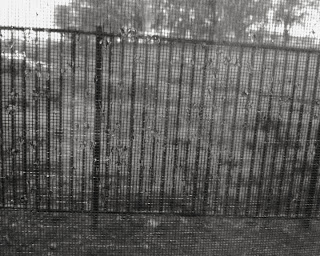I came upon this student Holocaust exhibition in a rather somber fashion, after reading an obituary for Kathy Carlisle, the high school teacher who had assigned it. The project, The Holocaust: Illuminated Memory, showcases the collective work of photography students at St. Francis High School, Spring Semester 2012. In Ms. Carlisle’s own words,
“This conceptual photography assignment required students to utilize historical research about the Holocaust to create symbolic photographic imagery. An exploration of artists employing symbolism, metaphor, and allegory in historical and contemporary art established the foundation of the project. Students began their work by expanding their knowledge of the Holocaust from 1933 to 1945 through personal and collaborative research and class assignments.
The students’ creative challenges began as they refined their research to focus on a single personal narrative from a survivor or someone who had perished in the Holocaust. They were asked to personally assess and symbolize the essence of that single person’s story through photographic imagery. Students were limited to a palette of sepia or black and white photography, using only tonal value to describe the depth and breadth of their concept. The final step of the project required students to write an artist’s statement about their work, elucidating their creative process and its connection to their research.”
What I like about this assignment is that it required the students to get in real close and seek out one person or one moment and create art around that. To see the trees instead of the forest. St. Francis is an all-girls Catholic school, so I’m assuming none of the young women have a personal connection to the Holocaust, although it’s quite possible I am mistaken. Some of the students were able to go beyond the cliché, not an easy task in our over-saturated Holocaust memorializing world. I did not write that last sentence as a criticism of the vast amount of Holocaust art and literature that exists, only that it’s quite a feat to capture something that goes beyond “Never Forget.”
Some of the students’ work worth mentioning include:
Trapped in the Snow – by Hibba Munir
I linked my images to the personal history of Hanna Mueller. Hannah Mueller was reading about the harrowing treatment of Jews during the Spanish Inquisition and she told her grandmother, “We’re fortunate that we live in the 20th century in Czechoslovakia and such a thing can’t happen to us.” It was only six years later on March 15, 1939, when the Germans occupied Prague. On a cold and snowy day, when Mueller was only a mile from her home, the Germans entered the city on tanks and trucks, with their guns pointed toward the rooftops. The picture I chose symbolizes how calm the cold and snowy day seemed, until the Germans entered the city. In my second image, the fence symbolizes how the Jews were trapped and how they were just waiting to reach the other side, which contained trees, a symbol of freedom. Mueller’s story really moved me because it made me think of how innocent the Jews were, and how bad luck just came upon when they least expected it. I learned how much suffering the Jews went through both emotionally and physically. I learned how unjust the Germans actions were. By reading Mueller’s story and other stories, I was able to grasp a better perspective of what occurred at the concentration camps.
The Valued Potato – by Nhi Le
In this image, I wanted to emphasize the importance of a potato to a person living during the Holocaust. I was surprised that someone compared a potato to a diamond. I didn’t think anyone would compare a small worthless potato to a valuable diamond. When I read about this, I thought of how much I eat every day and how I have taken so much for granted. In the photograph, I compared a bowl of food that I eat everyday to one potato that can last a person a whole day or even a week.
The Wall in the Way – by Maxi Wilson
I chose to portray the life of David Rubinowicz. He loved nature and enjoyed looking out a window that faced a road and a large field. He said that he remembered when his favorite field was blocked by marching soldiers. I was inspired to portray having things that you loved forcefully taken away. I learned that the Holocaust involved a lot of sneaking, hiding, and running away than I had originally thought. I know that many families were separated during the Holocaust, but I feel like losing something inanimate, like a field, is just as heartbreaking. If you lose the joyful things in life, along with the love from your family, what do you really have? I felt that having a gate in front of the field would portray the dividing aspect of the Holocaust. In other words, it shows that victims of the Holocaust were unable to have what they desired.





